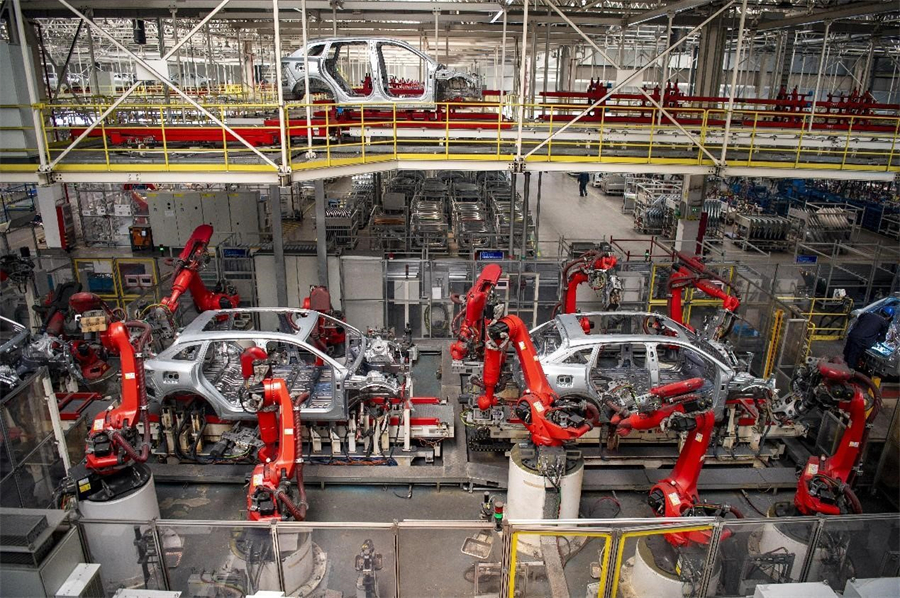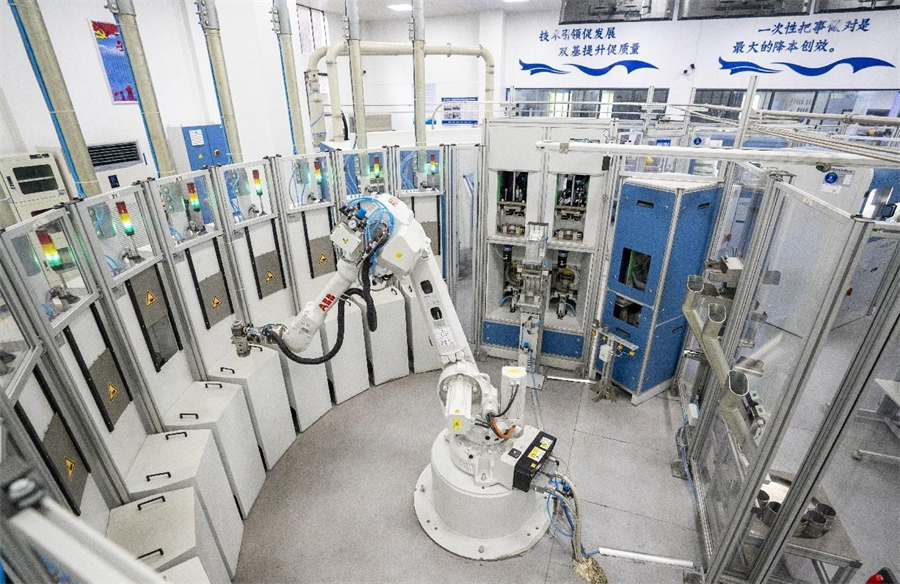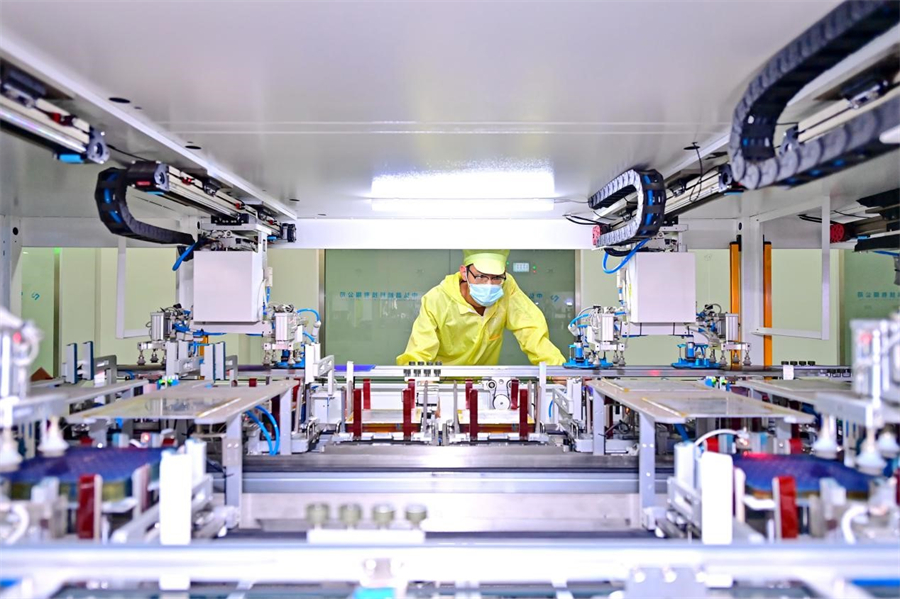China vigorously promotes construction of modern industrial system
Since this year, China's industrial development has been moving forward steadily, with continuous progress in industrial upgrading.
The country's first domestically-built large cruise ship has successfully completed its first test mission, and is expected to be named and delivered by the end of this year.

New energy vehicles are manufactured in an intelligent workshop of Chinese automobile manufacturer Leapmotor in Jinhua, east China's Zhejiang province. [People's Daily Online/Hu Xiaofei]
Recently, two of China's self-produced C919 large aircraft both began serving routes, marking another milestone for the steady expansion of its commercial operation.
The world's first 16-megawatt offshore wind turbine has been installed in China's Fujian province, showing a major breakthrough in deep-sea wind power construction capabilities.
Statistics indicate that as the economy and society have fully resumed normal operations, China's primary, secondary and tertiary industries are recovering with development fundamentals consolidated.
In agriculture, the market supply of vegetables, fruits, meat, poultry, eggs, and dairy products has been generally sufficient in the first half of this year, with another bumper harvest of summer grain.
In industry, the value-added industrial output grew 3.7 percent year-on-year in July.

A robotic arm works in a laboratory of a technology center of China Baowu Steel Group Corporation. [People's Daily Online/Tan Jianrong]
The service sector also maintained relatively fast growth, with the modern service industry expanding rapidly. In July, China's service production index grew 5.7 percent from a year ago.
While development fundamentals have been strengthened, the industrial structure is also continuously optimized.
On Aug. 15, an overflow ball mill passed the factory acceptance test and was delivered to its customer. With a diameter of 8.2 meters and a length of 12.7 meters, the ball mill also adopts a smart load-sensing system.
The machine, independently developed by Chinese company CITIC Heavy Industries, was China's largest ball mill exported overseas, marking a breakthrough in domestic R&D and manufacturing of large grinding equipment. So far, the company has delivered over 1,700 sets of large mills, with exports to 68 countries and regions.
This year, the manufacturing sector is following the trend of high-end development, with a continuous rise of technological intensity degree in industrial production.
In the first seven months, the value-added output of the equipment manufacturing sector rose 6.1 percent, continuing to outpace that of overall industrial enterprises above the designated size. Among them, High-tech sectors like electrical machinery and auto industry grew fast, providing solid support for the steady recovery of industrial production and optimization of industrial structure.
On Aug. 9, Chinese new energy vehicle (NEV) manufacturer BYD rolled off its 5 millionth NEV, becoming the world's first automaker to reach this milestone. Data from the China Association of Automobile Manufacturers show that China's NEV production and sales grew around 40 percent year-on-year in the first seven months of this year, with market share reaching 29 percent.
In a factory of Shandong Fuhai New Materials Technology Company in east China's Shandong province, trucks were seen lining up, ready to transport metal plates to ports for global shipment. From signing in with a WeChat mini-program, to loading and weighing cargo automatically by scanning QR codes, trucks can serve in a smart way in the factory.

Solar cells are manufactured in a workshop of a photovoltaic module enterprise in Fuzhou, east China's Jiangxi province. [People's Daily Online/Zhu Haipeng]
Thanks to the application of an industrial internet platform, personnel, vehicles and goods were intelligently managed by the company, and the warehousing efficiency was improved by 15 percent, said Song Zhigang, a deputy general manager of a Shangdong-based company providing such service.
This year, China's strategic emerging industries are thriving, with accelerating innovation breakthroughs in key sectors such as lithium battery, photovoltaics and NEV. They have become an important pillar for China's high-quality economic development.
"Driven by green and smart development, industrial foundations have been continuously strengthened, energizing economic growth," said Hong Qunlian, researcher with the Academy of Macroeconomic Research of the National Development and Reform Commission.
In the second quarter, the prosperity index for the NEV and the new energy sectors reached 143.7 and 149.4 respectively, up 11.7 percent and 13.3 percent respectively compared with the end of last year. They are currently the two most vibrant industrial sectors, Hong said.
"Strategic emerging industries have been growing positively since the beginning of this year, with markedly improved performance and confidence," said Wei Qijia with the State Information Center.
According to Wei, during the April-June period this year, the entrepreneur confidence index and prosperity index for strategic emerging industries reached 131.3 and 126 respectively, up by 6.7 percent and 2.3 percent respectively from the end of last year.
The Chinese economy has maintained strong resilience and great potential, and its long-term positive fundamentals remain unchanged. China will systematically implement policies and continue promoting the construction of a modern industrial system.
























